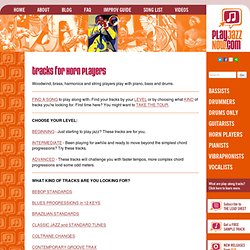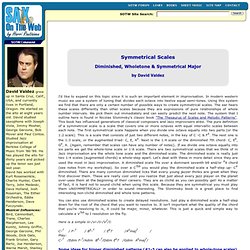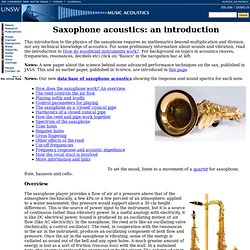

Texas School Music Project: BAND. The Vintage Saxophone Gallery. List of jazz saxophonists. John Coltrane’s Improvised Line in Milestones as a Model for Incorporating Sequential Patterns in Jazz Improvisation. Sax on the Web > Jazz Saxophone Lessons with Tim Price. Education. Pop Sheets 4U. The International Saxophone Home Page. Jazz Play-Along Tracks for Horn Players. A turnaround is a kind of musical cadence, a progression of chords that provides harmonic "punctuation" in a composition.

Turnarounds are used to establish a tonal center (or key), to mark the end of a section of a tune, to return to the beginning of the previous section or to prepare for the beginning of a new section. A turnaround can also serve as an independent repeating section of a tune, often occurring in the form of a coda. The harmonic material of many standard tunes consists of nothing more than variations of turnarounds. They can be thought of as essential formulas for understanding how compositions from the mainstream jazz and popular repertoire "work" harmonically.
Though there are many jazz composers who've extended the language far beyond these harmonic formulas, the ability to understand and make creative use of turnarounds is essential for the jazz improvisor. Close. Sax on the Web > Jazz Saxophone Lessons with Tim Price. Albinoni, Tomaso - Adagio (Violin and Piano (Organ)) SOTW Jazz > Symmetrical Scales by David Valdez.
I'd like to expand on this topic since it is such an important element in improvisation.

In modern western music we use a system of tuning that divides each octave into twelve equal semi-tones. Using this system we find that there are only a certain number of possible ways to create symmetrical scales. The ear hears these scales differently than other scales because they are expressions of pure relationships of whole number intervals. We pick them out immediately and can easily predict the next note. The system that I outline here is found in Nicolas Slonimsky's classic book "The Thesaurus of Scales and Melodic Patterns".
You can also use diminished scales to create delayed resolutions. Here is a simple iii-/vi-/ii-/V7/I: C-7 / F-7 / Bb-7 / Eb7 /Abmaj7 / Play: C-7 /Edim F-7/Adim Bb-7/Ddim Eb7 /Gdim Abmaj7/ Some ideas for hipper diminished patterns (#1-3 can also be applied to whole-tone scales) Original chords: D-7 / G7b9 / Cmaj7 You play: Adim /Ab dim / C maj7 Over: /D-7 /G7b9 /Cmaj7 / Jazz Improvisation. Introduction to saxophone acoustics. As we play more loudly, we increase the pressure (which moves the operating point to the right) and we also increase the range of pressure.

This means that the (larger) section of the curve we use is no longer approximately linear. This produces an asymmetric oscillation. It is no longer a sine wave, so its spectrum has more higher harmonics. (Centre diagram.) Have a look at the spectra for different dynamic levels on the note A#3. When we blow even harder, the valve closes for part of the part of the cycle when the pressure in the mouthpiece is low due to the standing wave inside the instrument. While talking about decibels, we should mention that spectra, including those on our saxophone site are usually shown on a decibel scale. Soon after this page went up, saxophonists wanted to know a lot more about playing more loudly. Many examples of sound spectra are given on the data base. Control parametes for playing.